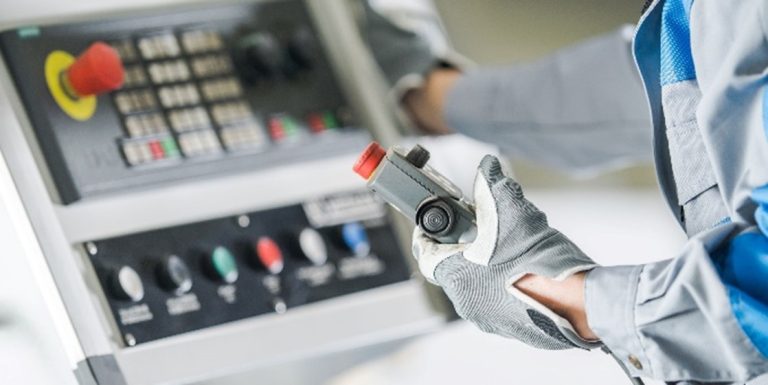How Does a Laser Cutting Machine Work?
Providing a method to cut materials with unparalleled precision and speed. These machines use focused laser beams to slice through materials, offering clean, accurate cuts. This blog will delve into how laser cutting machines work, the different types of lasers used, and the various components involved in the process.
The Basics of Laser Cutting
Laser cutting involves using a high-powered laser beam directed at a material to melt, burn, or vaporise it along a predefined path. The laser beam is typically generated by a laser resonator and is guided through a series of mirrors or optical fibres to the cutting head. The cutting head focuses the laser beam onto the material, usually through a lens, concentrating the light energy into a very small, intense spot.
Types of Laser Cutting Machines
There are three primary types of laser cutting machines, each suited for different applications and materials:
CO2 Lasers:
These are gas lasers that use a mixture of carbon dioxide, nitrogen, and helium. They are efficient for cutting non-metal materials such as wood, acrylic, and plastic, as well as thin metals.
Fibre Lasers:
These lasers use optical fibres doped with rare earth elements like ytterbium. Fibre lasers are ideal for cutting metals, including aluminium, steel, and brass, due to their high power and efficiency.
Nd:YAG (Neodymium-doped Yttrium Aluminium Garnet) Lasers:
These solid-state lasers are used for applications requiring high power and precision, such as in the aerospace and automotive industries. They are capable of cutting through very thick and tough materials.
Key Components of a Laser Cutting Machine
Understanding the main components of a laser cutting machine helps in appreciating its functionality and precision.
Laser Resonator
The laser resonator is the heart of the machine, where the laser beam is generated. It can be a gas-filled tube (in the case of CO2 lasers) or a fibre optic cable (for fibre lasers). The resonator produces a continuous or pulsed beam of light, depending on the application.
Mirrors and Optical Fibres
These components guide the laser beam from the resonator to the cutting head. Mirrors, or sometimes optical fibres, are positioned strategically to reflect and direct the beam along the desired path without losing energy.
Cutting Head
The cutting head houses the lens that focuses the laser beam onto the material. It also often includes a nozzle through which assist gases (such as oxygen, nitrogen, or air) are blown to aid in the cutting process and to remove molten material from the cut zone.
CNC Controller
A Computer Numerical Control (CNC) system controls the movement of the cutting head and the positioning of the material. It follows the cutting path as programmed in the design software, ensuring precision and repeatability.

The Laser Cutting Process
Design Preparation:
The process begins with creating a design using CAD (Computer-Aided Design) software. The design file is then converted into a machine-readable format, typically G-code, which contains instructions for the CNC controller.
Material Placement:
The material to be cut is placed on the machine bed. It is important to ensure that the material is flat and properly secured to prevent any movement during cutting.
Focusing the Laser:
The cutting head moves into position, and the laser is focused onto the material’s surface. The lens in the cutting head concentrates the laser beam into a very small, intense spot, usually less than a millimetre in diameter.
Initiating the Cut:
The CNC controller moves the cutting head along the predefined path while the laser beam cuts through the material. The laser’s heat melts, burns, or vaporises the material, creating a narrow cut or kerf.
Assist Gases:
Assist gases, such as oxygen, nitrogen, or compressed air, are blown through the nozzle to remove molten material from the cutting area, cool the cut edges, and prevent oxidation or combustion, depending on the material and desired finish.
Quality Control:
After the cutting is complete, the piece is removed from the machine bed and inspected for quality. High-precision cuts usually require minimal post-processing, but some finishing may be necessary for specific applications.
Advantages of Laser Cutting
– Precision: Laser cutting achieves high levels of accuracy, making it suitable for intricate designs and detailed work.
– Speed: The process is much faster than traditional cutting methods, especially for complex shapes and materials.
– Versatility: Laser cutting can handle a wide range of materials, from metals to plastics and wood.
– Quality: The clean edges produced by laser cutting reduce the need for secondary finishing processes, saving time and cost.
Applications of Laser Cutting
Laser cutting is used across various industries, including:



Aerospace:
For cutting intricate components from high-strength materials.
Automotive:
For producing parts and prototypes with precise dimensions.
Electronics:
For cutting casings, circuit boards, and other components.
Conclusion
At Emery Laser, we specialise in delivering high-quality laser cutting services tailored to the unique needs of our clients. Understanding how these machines work can help you make informed decisions about your next project and leverage the full potential of laser cutting technology.
For more information or to discuss your project, contact us. We look forward to helping you achieve your goals with our cutting-edge laser cutting services.